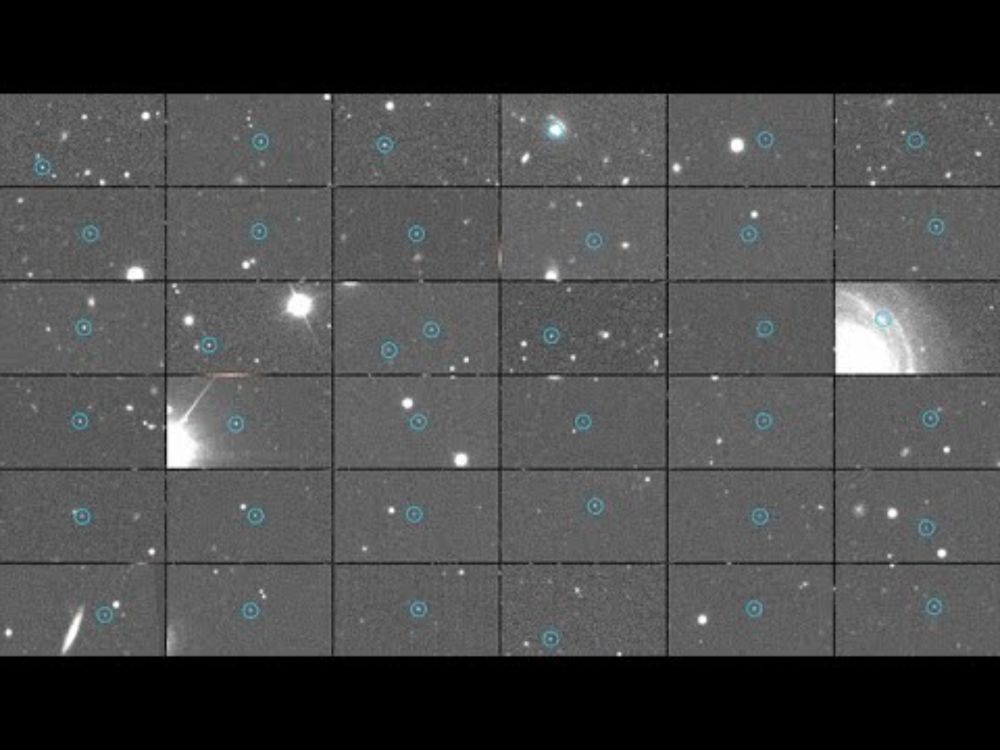You thought you could hide from me! Ha ha! I learned to do this on TRAPPIST-1 data! You are trivial!
ahem, as you were
07.08.2025 16:53 — 👍 2 🔁 0 💬 0 📌 0
Except for, of course "this spectrum is wrong, please fix it, here's three months FTE"
07.08.2025 16:34 — 👍 3 🔁 0 💬 0 📌 0
"This spectrum is wrong, please fix it" is my favorite kind of work email
07.08.2025 16:33 — 👍 3 🔁 0 💬 1 📌 1
Images from Palomar at 2 different infrared wavelengths last night - one that Saturn's methane atmosphere absorbs, and one the it reflects!
(The faint point source is the moon, Tethys!)
Taken by David Ciardi, Catherine Clark,
@lowbacca.bsky.social and Miranda Felsmann; animated by me (and ezgif!)
06.08.2025 18:04 — 👍 297 🔁 72 💬 6 📌 1
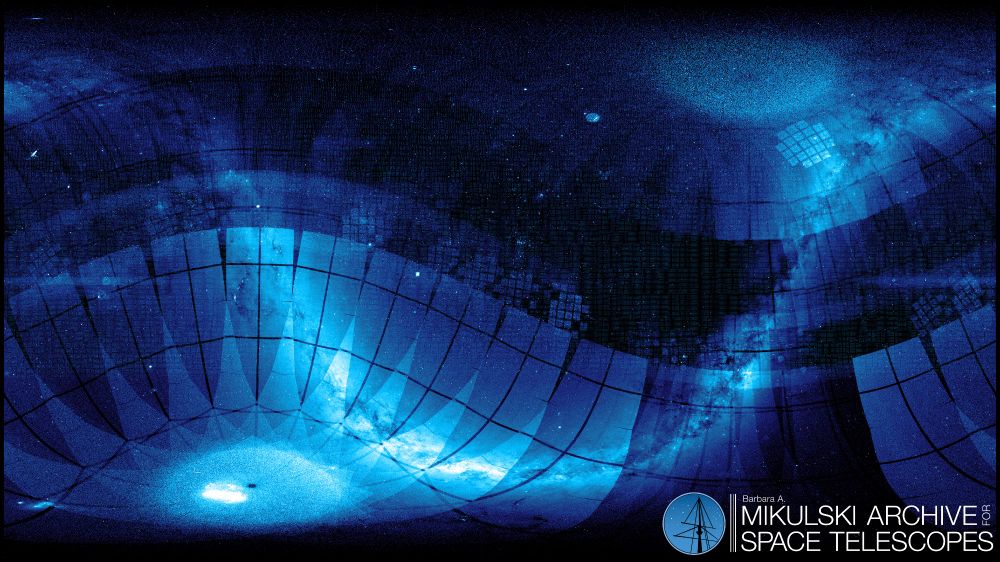
MAST background in "standard" sky projection, in hues of blue. Lighter blue areas mark lots of observations, while darker areas are less. Numerous patterns are visible, like the continuous viewing zones as ovals in the lower-left and upper right, patterns from overlapping TESS FFIs, or the Kepler footprint shapes stamped along the ecliptic and in the original Kepler field in the upper-right.
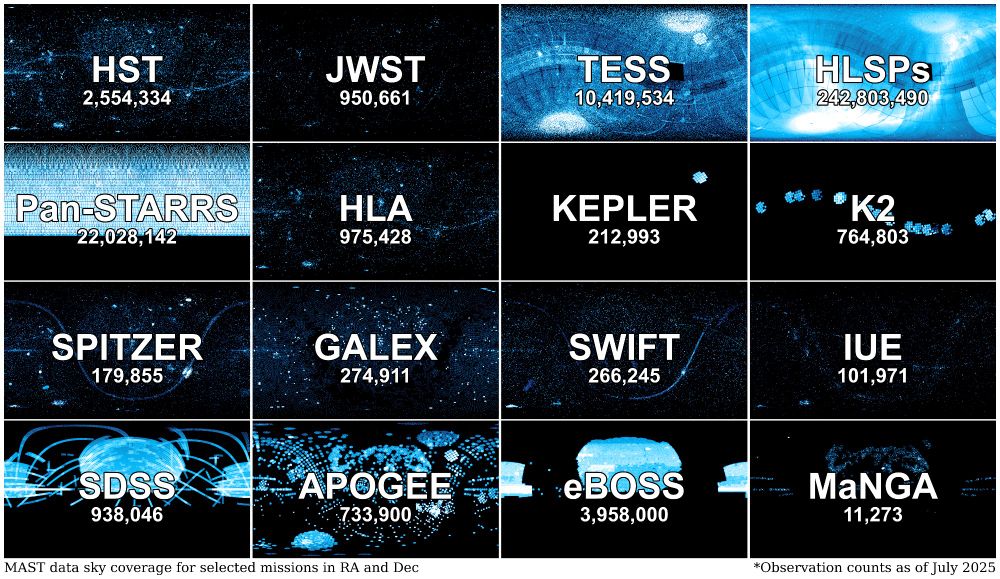
A grid of 16 images, 4x4, showing the sky background only for specific missions to get a sense of where in the sky and how much of it each mission observed to at least some depth.
Ever wondered what the "MAST Sky" looks like, from our ~6 PB of data spanning 3 decades...check this out! spacetelescope.github.io/mast-blog/ma...
Really fun project led by the very talented Julie Imig at MAST, showing mission coverage sky-projected! They make VERY good video backgrounds, btw. 🔭
31.07.2025 21:12 — 👍 39 🔁 9 💬 0 📌 2
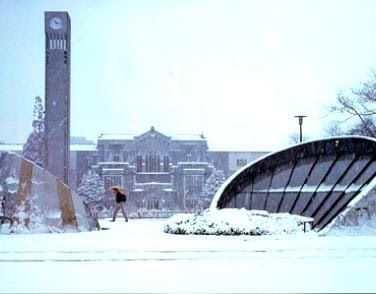
out of academia
Out of Academia
I've had a few other former astronomers reach out to me lately about transitioning into data science/ML, and I decided to write about it.
This is my personal journey from astro to ocean, and the most useful steps I took along the way.
30.07.2025 04:18 — 👍 203 🔁 44 💬 8 📌 8
Clearly the Midlands got hit with a Terrible Rebrand Curse this week
25.07.2025 16:04 — 👍 2 🔁 0 💬 0 📌 0
The world is very bad, but I found a squirrel that looks like Napoleon
24.07.2025 02:06 — 👍 1940 🔁 367 💬 17 📌 9
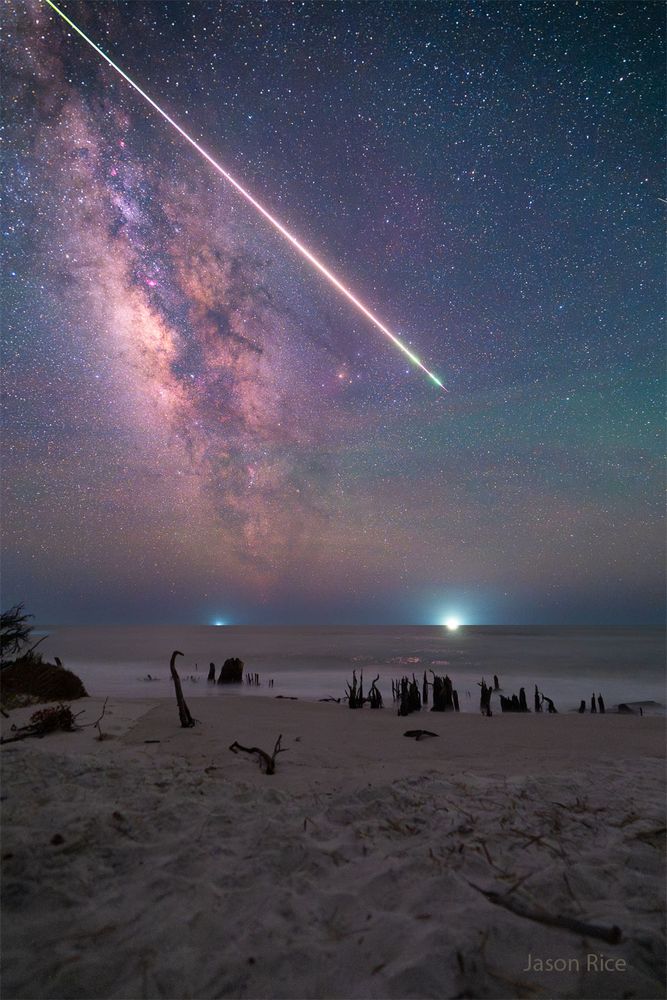
A bright streak is pictured through a starry sky over a
beach spotted with the husks of dead trees. The rollover
shows the resulting smoke trail from the bright meteor.
Obsessed with today's #AstronomyPictureOfTheDay 🤩
Fireball over Cape San Blas
Credit: Jason Rice (@jriceastro on IG) 🔭🐡🎨
23.07.2025 14:55 — 👍 53 🔁 8 💬 2 📌 0
Hubble Space Telescope images of interstellar comet 3I/ATLAS are out! These were taken 5 hours ago. Plenty of cosmic rays peppering the images, but the comet's coma looks very nice and puffy. Best of luck to the researchers trying to write up papers for this... archive.stsci.edu/proposal_sea... 🔭
21.07.2025 21:28 — 👍 720 🔁 152 💬 14 📌 19
Betelgeuse is a double! Fun to learn something new about a familiar star.
21.07.2025 19:09 — 👍 149 🔁 29 💬 7 📌 6
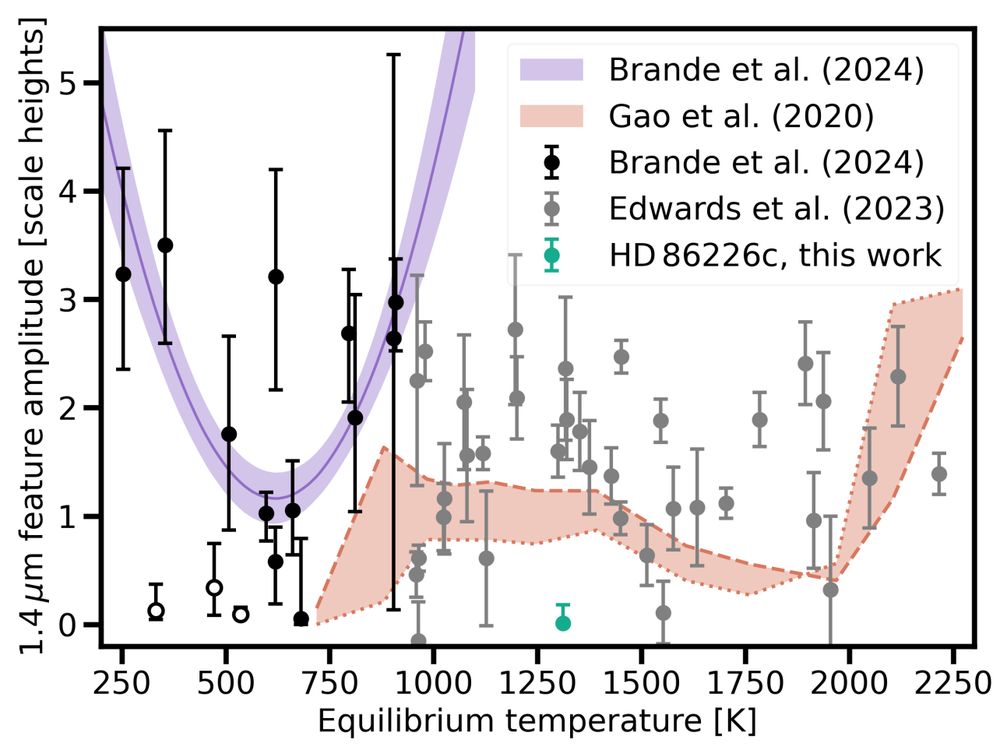
Happy to share the first paper from the SPACE Program, led by my student Angelique Kahle! she observed a hot little sub-Neptune, HD 86226c (Rp = 2.3 Re; equilibrium temp = 1300 K). arxiv.org/pdf/2507.13439
The spectrum is *really* flat ! here's the amplitude compared to other gaseous planets.
21.07.2025 11:25 — 👍 25 🔁 8 💬 1 📌 0
the episode where Quark marries a Klingon is probably the funniest Trek has ever been, and Gul Dukat is just hands down one of the most three dimensional villains in fiction. and then there's Garak, holy shit what a character.
21.07.2025 00:46 — 👍 1819 🔁 58 💬 50 📌 12

Some bread
Bread
19.07.2025 20:42 — 👍 10 🔁 0 💬 0 📌 0
If you want a better look at these three new ships, check this out:
www.macrossworld.com/mwf/topic/48...
19.07.2025 19:22 — 👍 175 🔁 28 💬 10 📌 4
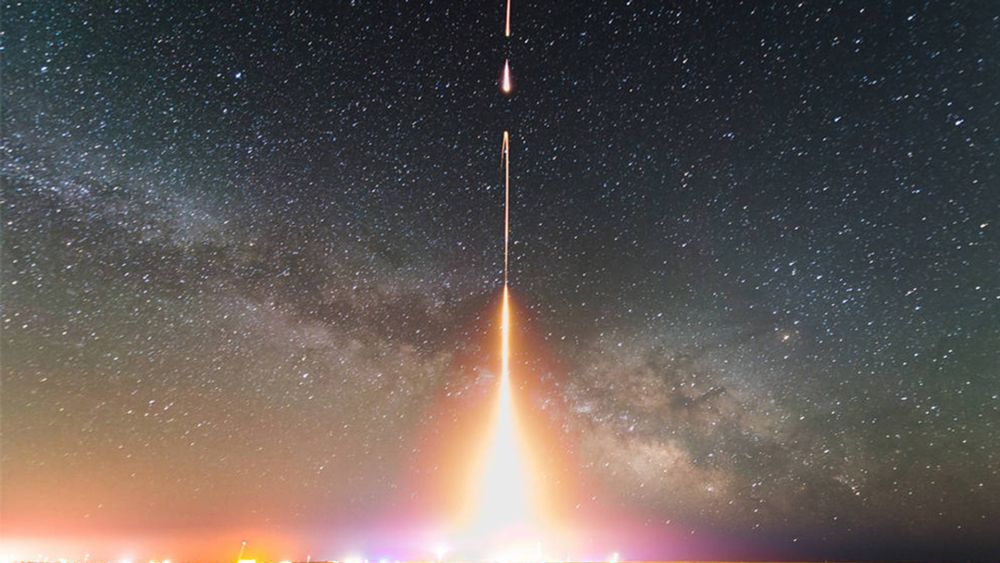
SNIFS
The Solar eruptioN Integral Field Spectrograph (SNIFS) sounding rocket is designed to break new ground by using a unique set of capabilities to probe the most vexingly complex region of the solar atmo...
We are the Solar eruptioN Integral Field Spectrograph (SNIFS), a @laspatcu.bsky.social sounding rocket mission!
You can read more about us here: lasp.colorado.edu/missions/sni...
and here:
www.proquest.com/openview/805...
Watch this account for more updates as we get ready for launch!
10.07.2025 21:49 — 👍 4 🔁 2 💬 0 📌 0
Lotta "but what about cars" in response to this, but trains just shouldn't be this dangerous. If Brightline is going to be the model for future passenger rail in the US then it needs to improve dramatically
16.07.2025 15:03 — 👍 0 🔁 0 💬 1 📌 0
We're doing Skylon again? Millionth-time lucky I guess...
16.07.2025 14:27 — 👍 1 🔁 0 💬 0 📌 0
Wow! I wonder if astronomers using AI to 'assist' their coding also have the same overall *slowdown* found by the study below?
👇🔭
11.07.2025 07:52 — 👍 27 🔁 3 💬 1 📌 0
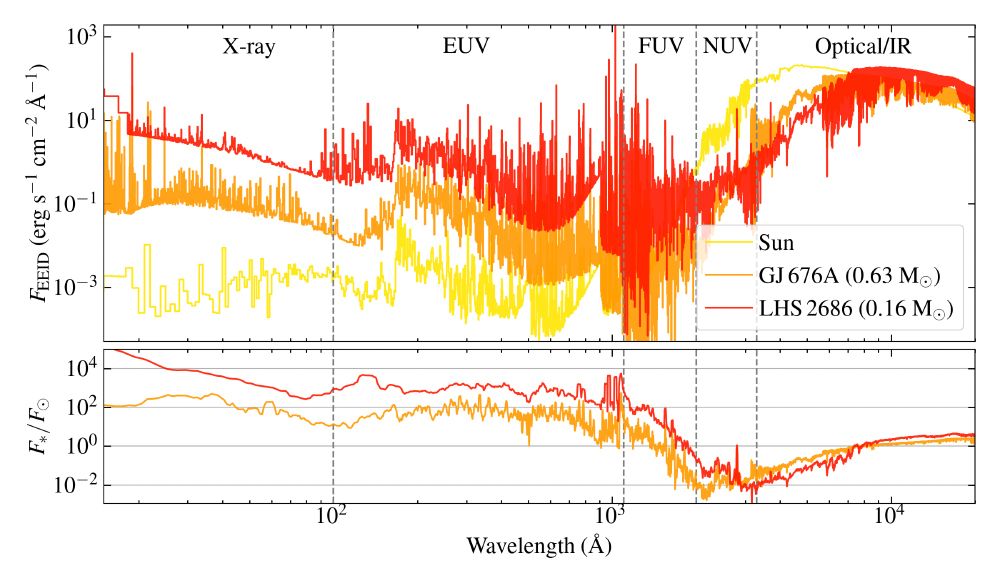
A two-panel plot comparing the Spectral Energy Distributions (SEDs) of two stars GJ 676A (orange line) and LHS 2686 (red line) to the Sun (yellow line).
The x-axis in both panels shows wavelength in Angstroms.
The top panel displays the stellar flux as a function of wavelength, scaled to the Earth Equivalent Instellation Distance. This represents the amount of X-ray and ultraviolet light a planet would receive in each star's habitable zone compared to Earth. The legend in the bottom right indicates stellar masses: GJ 676A has 0.63 solar masses, and LHS 2686 has 0.16 solar masses. The top of the plot labels spectral regions from left to right: X-ray, EUV (Extreme Ultraviolet), FUV (Far Ultraviolet), NUV (Near Ultraviolet), and Optical/Infrared.
The bottom panel shows the ratio of each star's SED to the Solar SED. The plot highlights how much more or less flux these stars emit at different wavelengths, with differences reaching up to four orders of magnitude at shorter (X-ray) wavelengths.
HLSP Update: Mega-MUSCLES' SEDs for a dozen of stars are now updated with DEM models for the Extreme Ultraviolet and provide model uncertainties. More details in Wilson et al. 2025:https://arxiv.org/abs/2411.07394 or ask @astrodave2.bsky.social. HLSP page: archive.stsci.edu/hlsp/muscles 🔭
07.07.2025 14:59 — 👍 3 🔁 1 💬 0 📌 2
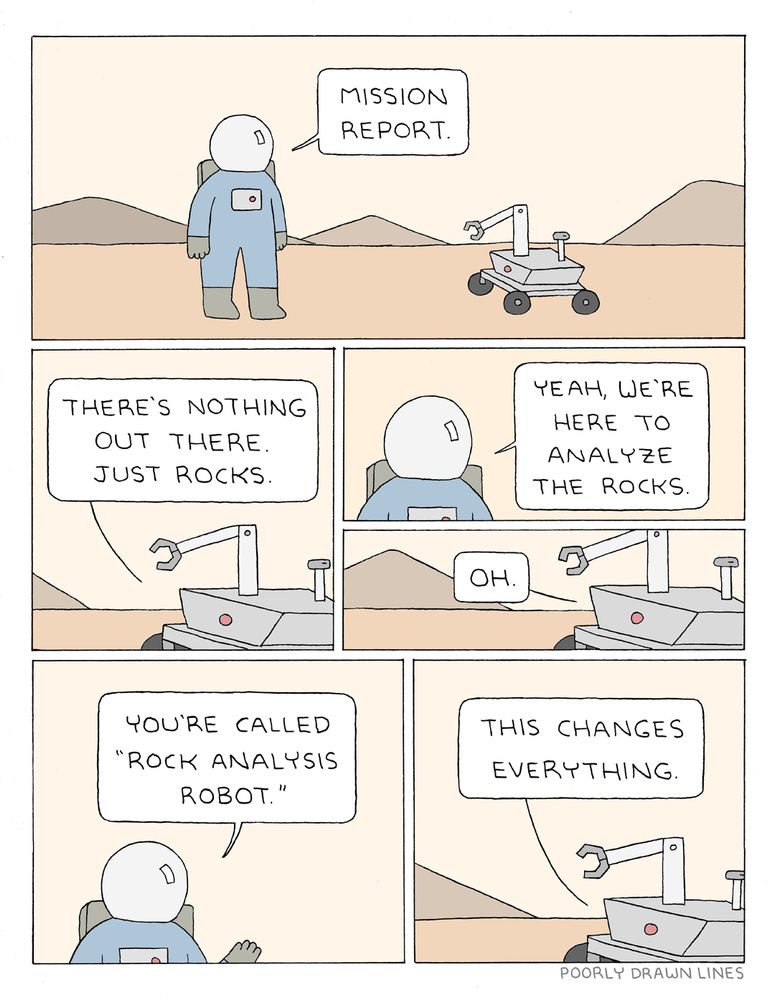
Report
06.04.2025 15:46 — 👍 1187 🔁 171 💬 3 📌 4
07.07.2025 15:38 — 👍 2 🔁 0 💬 0 📌 0
Only the third ever interstellar object: a tiny world that started its existence at another star. Now cruising in toward our Sun at ~58 km/s, a faint dot (V~18) in the Southern skies.
What a day 🔭
02.07.2025 13:51 — 👍 256 🔁 85 💬 6 📌 10
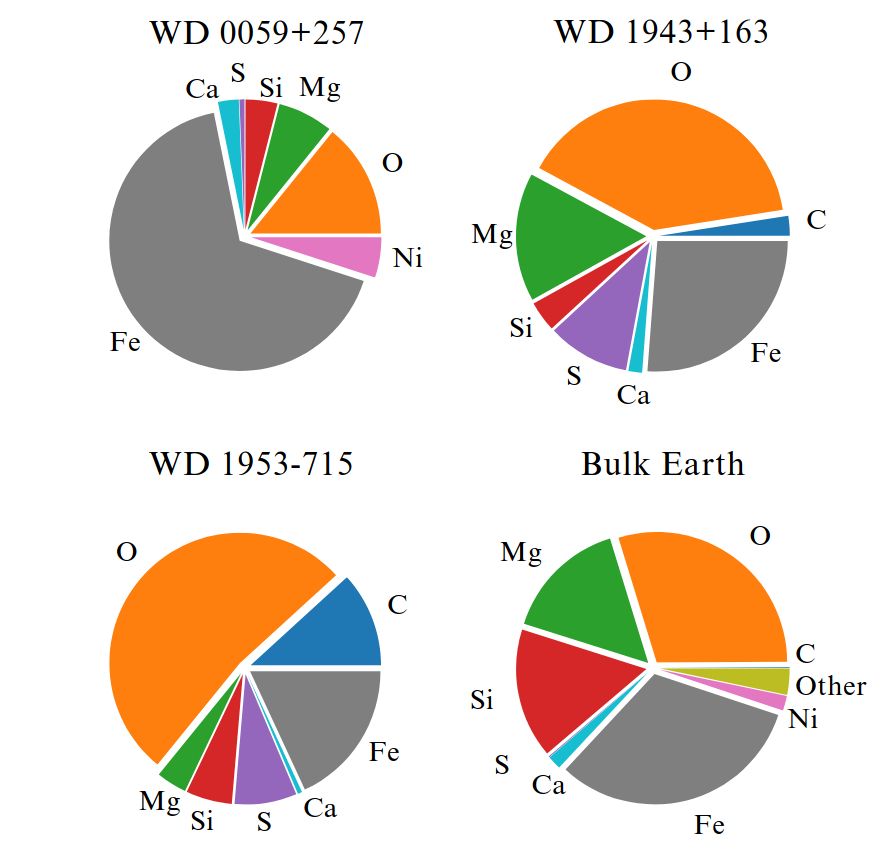
Figure 6 from Williams et al. 2025. Four pie charts are shown, comparing the bulk chemical composition of three extrasolar planetesimals compared with the Earth (bottom left). The top left object is dominated by iron, top right is more Earth-like but with added sulfur, and bottom left has lots more oxygen than Earth, which was perhaps there as water ice.
Very happy to have contributed to this paper on arXiv today, where Jamie Williams finds the remains of three extrasolar planetesimals with compositions quite different from the Earth arxiv.org/abs/2506.19931 🔭
26.06.2025 16:20 — 👍 7 🔁 2 💬 1 📌 0

Figure 6 from Williams et al. 2025. Four pie charts are shown, comparing the bulk chemical composition of three extrasolar planetesimals compared with the Earth (bottom left). The top left object is dominated by iron, top right is more Earth-like but with added sulfur, and bottom left has lots more oxygen than Earth, which was perhaps there as water ice.
Very happy to have contributed to this paper on arXiv today, where Jamie Williams finds the remains of three extrasolar planetesimals with compositions quite different from the Earth arxiv.org/abs/2506.19931 🔭
26.06.2025 16:20 — 👍 7 🔁 2 💬 1 📌 0
Good to see this being pursued as a state-wide project rather than the (unfeasible imo) plan of considering the Boulder and Longmont trains as an extension of the Denver metro
25.06.2025 17:28 — 👍 1 🔁 0 💬 0 📌 0
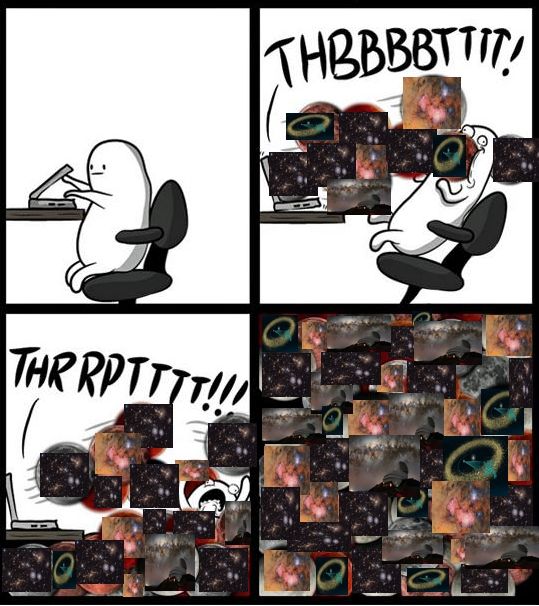
Altered version of a comic from The Oatmeal showing a guy being bombarded with images from the Rubin observatory
Astronomy Bluesky today:
23.06.2025 16:42 — 👍 62 🔁 11 💬 0 📌 2
Because it's not being said as part of this press conference, @vrubinobs.bsky.social would not be possible without the many, many international scientists and collaborators, some around the world, but many who immigrated to the US and are scientists and engineers here
23.06.2025 15:52 — 👍 79 🔁 29 💬 2 📌 1
YouTube video by NOIRLabAstro
A Swarm of New Asteroids
I really like this video showing some of the 2104 asteroids found in 10 hours of data - really gives a sense of how Rubin's view of the changing sky will be different. www.youtube.com/watch?v=JrmI...
23.06.2025 15:24 — 👍 146 🔁 63 💬 14 📌 15
In every time, in every place, the deeds of man remain the same. (He/Him).
WEBSITE: https://nathangoldwag.wordpress.com/
Planetary Astrophysicist at the University of California, Riverside. I like Venus. A lot. Exoplanets are also kinda cool.
I make chill scale modeling videos
+ Build custom model railroads for clients
https://lnk.bio/InterurbanEra
Aspiring philosopher; tolerable human; "amusing combination of sardonic detachment & literally all the feelings felt entirely unironically all at once" [he/his]
Astronomer at Boston University. Director of the Perkins Telescope Observatory.
Director & Professor at School of Earth & Space Exploration @ASU. Mars Sample Return Principal Scientist @NASA. Cosmic CSI detective, explorer, educator, wife, stepmom. Opinions are my own.
Account for the SNIFS sounding rocket, built by LASP @ CU Boulder. Run by the SNIFS team
Launch info
When: Friday, July 18th 1pm MDT / 3pm EDT
Location: White Sands Missile Range
Livestream video: https://video.ibm.com/wstf-wsmr (starts 30 min before)
astrophysics postdoc | cfa harvard & smithsonian | exoplanet atmospheres
A podcast about the fight against car culture. Hosted by Sarah Goodyear & Doug Gordon.
Pre-order our new book, "Life After Cars," coming Oct 2025 from Thesis / Penguin Random House.
https://www.lifeaftercars.com/
https://www.patreon.com/thewaroncarspod
Skeeting the sights, sounds, & news from 1996's historic alien attack & subsequent global (read: American) military response in real time. #IndependenceDay #ID4
I have arrived.
One existential crisis from being productive.
51 Pegasi b & Presidential Postdoctoral Fellow studying the atmospheres of planets outside our Solar System at @SESEASU -> Assistant Professor @SESEASU 2025
Previously @NASA Sagan Fellow. @Gates_Cambridge
scholar at @Cambridge_Uni.
Public scholar of the Bible and religion
For speaking requests: live@thewatermarkagency.com
Astrophysicist, exoplanet enthusiast.
Author of THE POSSIBILITY OF LIFE (2023), AT HOME IN THE STARS (202...8??) | series editor of THE BEST AMERICAN SCIENCE AND NATURE WRITING || she/her || jaimegreen.net
Science communicator, video maker, author, podcast creator. PhD in theoretical atmospheric physics. Born at 354 ppm.
https://linktr.ee/simonoxfphys
🌟Scientists & educators reveal how they explore the Universe, at bars & pubs around the world!🌟HQ account, follows satellite locations, organizers, & venues🌟 astronomyontap.org
But in contentment I still feel
The need of some imperishable bliss.
- Tech & AI ethics, programming, #a11y, eSports, and dogs
- Former astrophysicist & linguist, now CTO & software dev
- Cofounded AAS WGAD & created #disabledandSTEM
- they/them
Minnesota guy.
"This particular activist will not stop." Sen. Chris Murphy













